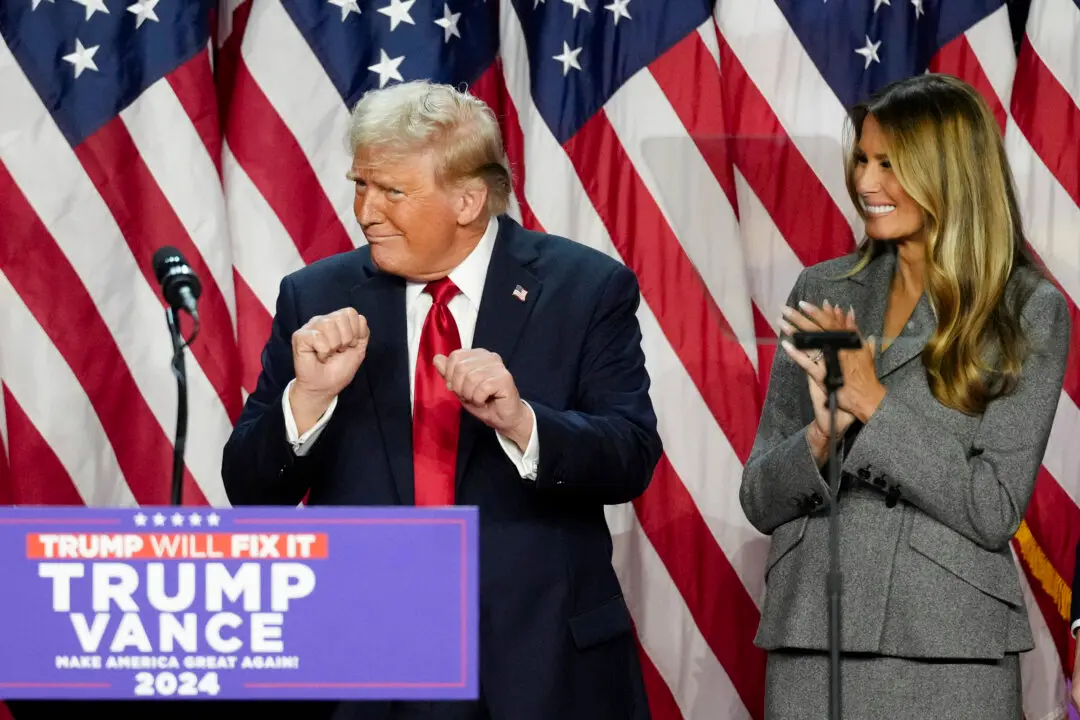Proposed tariff hikes by President-elect Donald Trump could significantly reduce the federal deficit over the next decade and would do so at modest cost to inflation and economic output, according to a new Congressional Budget Office (CBO) analysis, which is the highest-profile impact assessment yet of Trump’s proposed tariffs.
The nonpartisan agency’s analysis, released in a Dec. 18 letter to lawmakers, assumes three scenarios under Trump’s trade policy proposals: a universal 10 percent tariff on all imports; a 60 percent tariff on Chinese imports; and a combination of the two. Under a combined scenario, the CBO projects that the Trump tariffs could slash deficits by as much as $2.9 trillion over the next decade. This would slash by roughly 13 percent the estimated $22.1 trillion in total cumulative deficits that the CBO expects will be generated through 2034.
The agency warned that the proposed tariffs also have downsides. Inflation, as measured by the Personal Consumption Expenditures (PCE) price index, an inflation gauge that the Federal Reserve relies on most heavily in setting monetary policy, would increase by 1 percent over the next two years under the combined scenario.
After 2026, the tariffs would not have any additional significant effects on prices. Economic output would also see a decline. Under the most aggressive tariff scenario, U.S. gross domestic product (GDP) growth would be a relatively modest 0.6 percent lower over the next 10 years than it otherwise would be.
Trump, who has called himself “Tariff Man,” has repeatedly touted the use of tariffs for a range of policy outcomes, including protecting domestic industries from unfair foreign competition and incentivizing the reshoring of manufacturing jobs. During his first term, he used the tariffs or the threat of tariffs as a bargaining tactic to pressure countries into renegotiating trade deals that he felt unfairly disadvantaged American businesses. Recently, Trump threatened Canada and Mexico with 25 percent tariffs if they didn’t take action to stop the flow of fentanyl and illegal immigrants across their borders into the United States. […]
— Read More: www.theepochtimes.com
What Would You Do If Pharmacies Couldn’t Provide You With Crucial Medications or Antibiotics?
The medication supply chain from China and India is more fragile than ever since Covid. The US is not equipped to handle our pharmaceutical needs. We’ve already seen shortages with antibiotics and other medications in recent months and pharmaceutical challenges are becoming more frequent today.
Our partners at Jase Medical offer a simple solution for Americans to be prepared in case things go south. Their “Jase Case” gives Americans emergency antibiotics they can store away while their “Jase Daily” offers a wide array of prescription drugs to treat the ailments most common to Americans.
They do this through a process that embraces medical freedom. Their secure online form allows board-certified physicians to prescribe the needed drugs. They are then delivered directly to the customer from their pharmacy network. The physicians are available to answer treatment related questions.


